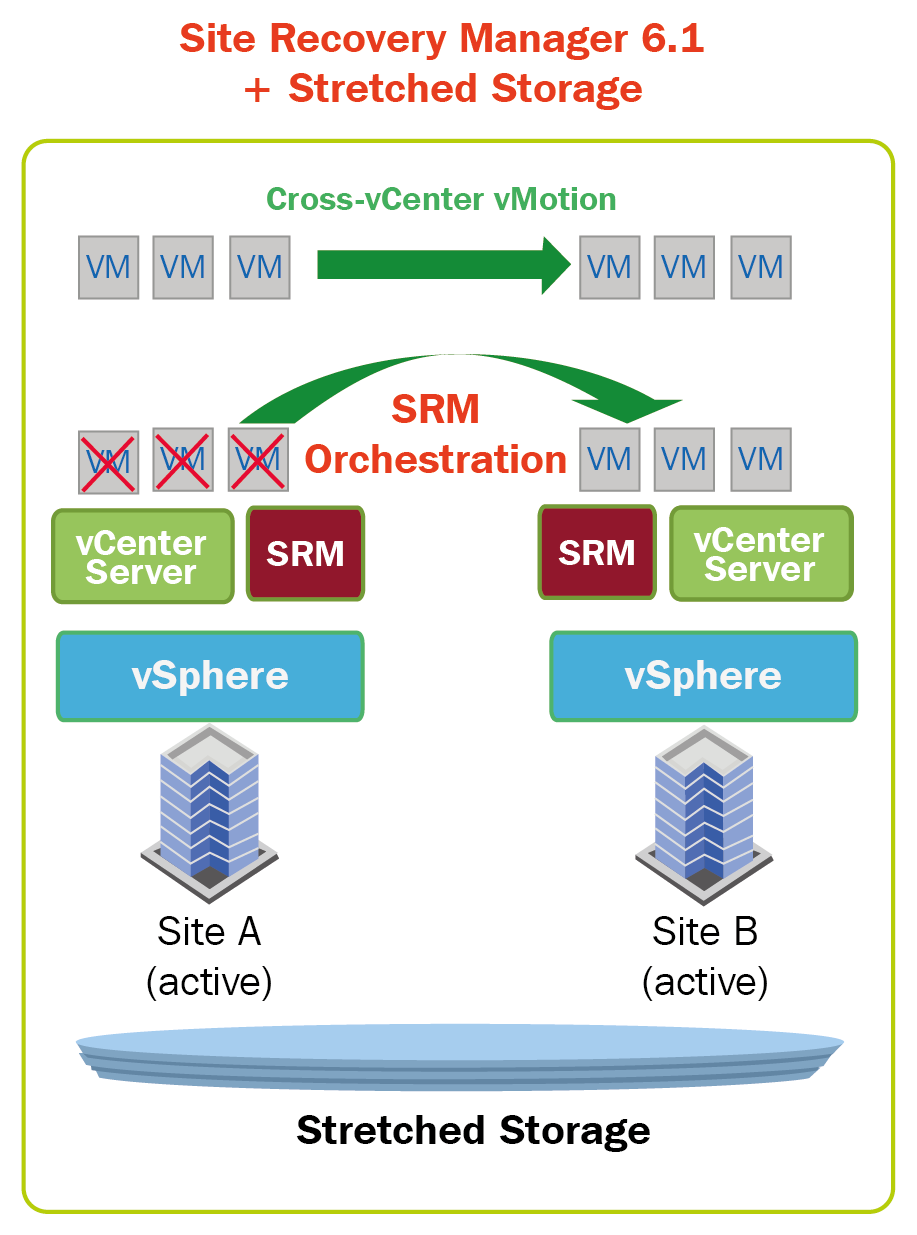As written, cross-site replication at the VM or storage level is just the first step for DR. You will then need an entire set of rules to define how to recover your VMs in case of the main site failure. SRM delivers several features and functions, including centralized recovery plans, non-disruptive testing and automated orchestration, both for fail-over (in case of DR) and fail-back (in case the original site has been recovered).
SRM 6.1 adds support for stretched storage solutions over a metro distance from several major storage partners, and integration with cross vCenter vMotion when using these solutions for disaster avoidance.
Also, adding a stretched storage to an SRM deployment fundamentally reduces recovery times; in the case of a disaster, recovery is much faster due to the nature of the stretched storage architecture that enables synchronous data writes and reads on both sites.
But note that the SRM model for active-active data centers is fundamentally different to the model used in the VMware vMSC. SRM uses two vCenter Server instances, one on each site, instead of stretching the vSphere cluster across sites.
The new version of SRM supports properly and natively stretched storage, but with two different VMware clusters as described in the following figure:

VMware SRM with stretched storage
Adding SRM to a stretched storage deployment allows users to benefit from key features of SRM that are not present in vMSC, such as centralized recovery plans, orchestrated recovery, and non-disruptive automated testing.
